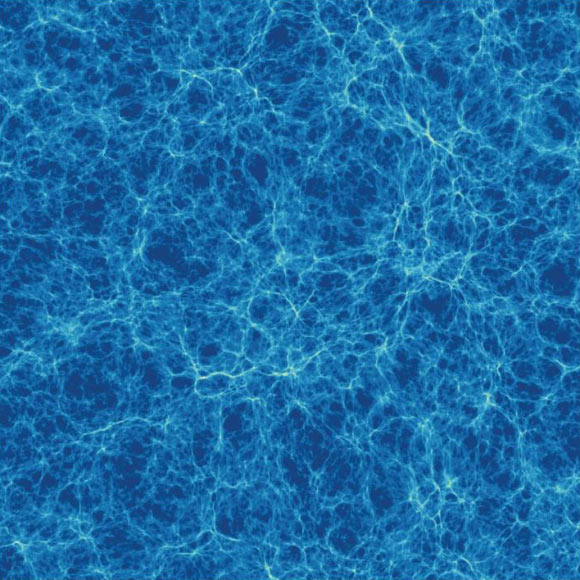Study: Direction in Which Galaxies Spin Depends on Their Mass | Astronomy – Sci-News.com
Astronomers have measured the rotation of 1,418 galaxies and found that small ones are likely to spin on a different axis to large ones. The rotation was measured in relation to each galaxy’s closest cosmic filament.

This is a simulation showing a section of the Universe at its broadest scale; a web of cosmic filaments forms a lattice of matter, enclosing vast voids. Image credit: Greg Poole / Tiamat Simulation.
Cosmic filaments are massive thread-like formations, comprising huge amounts of matter, including galaxies, gas and dark matter.
They can be 500 million light-years long but just 20 million light-years wide.
At their largest scale, they divide the Universe into a vast gravitationally linked lattice interspersed with enormous dark matter voids.
“The spine of cosmic filaments is pretty much the highway of galactic migration, with many galaxies encountering and merging along the way,” said Dr. Charlotte Welker, a researcher at McMaster University, the ARC Centre of Excellence for Astrophysics in 3 Dimensions (ASTRO 3D) and ICRAR.
Using data gathered by the Sydney-AAO Multi-object Integral-field spectrograph (SAMI) at the Anglo-Australian Telescope, Dr. Welker and colleagues studied each of the target galaxies and measured its spin in relation to its nearest filament.
They found that smaller ones tended to rotate in direct alignment to the filaments, while larger ones turned at right angles.
The alignment changes from the first to the second as galaxies, drawn by gravity towards the spine of a filament, collide and merge with others, thus gaining mass.
“The flip can be sudden. Merging with another galaxy can be all it takes,” Dr. Welker said.
“The result offers insight into the deep structure of the Universe,” said Dr. Scott Croom, an ASTRO 3D principal investigator from the University of Sydney.
“Virtually all galaxies rotate, and this rotation is fundamental to how galaxies form.”
“For example, most galaxies are in flat rotating disks, like our Milky Way. Our result is helping us to understand how that galactic rotation builds up across cosmic time.”
“The Milky Way, by the way, has a spin well aligned with its nearest cosmic filament, but belongs to a class of intermediate size galaxies that, over all, show no clear tendency towards parallel or perpendicular spins.”
The findings were published in the Monthly Notices of the Royal Astronomical Society.
_____
C. Welker et al. The SAMI Galaxy Survey: First detection of a transition in spin orientation with respect to cosmic filaments in the stellar kinematics of galaxies. MNRAS, published online October 12, 2019; doi: 10.1093/mnras/stz2860




